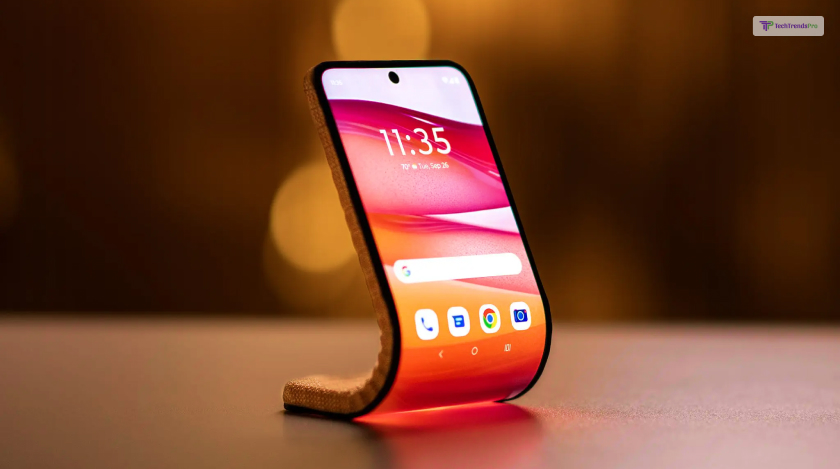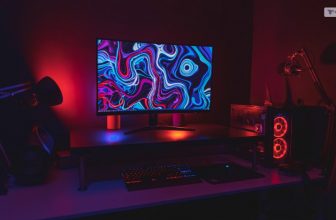
Motorola, known for its innovation in smartphone design, has taken a significant leap forward in the realm of flexible displays. At the recent Lenovo Tech World ’23, Motorola introduced a groundbreaking concept phone with a display that can literally wrap around your wrist, marking a milestone in the evolution of mobile technology.
This concept, referred to as an “adaptive display” by Motorola, showcases the potential of flexible screens in shaping the future of smartphones. When laid flat, the device features a generous 6.9-inch screen, providing a standard Android experience. But the magic doesn’t stop there. The display can be flexed into various forms, catering to diverse user needs.
One striking feature of this concept is the ability to switch between different modes. In an upright position, the device transforms into a more compact Android experience with its 4.6-inch display. This configuration is ideal for activities like video calls. For those seeking a wearable experience, you can wrap the device around your wrist, mimicking the style of the Motorola Razr Plus’s cover screen.
Qual a sua opinião sobre esse novo Motorola flexível que vira pulseira? pic.twitter.com/63VUNtAt2s
— Henrique Esteter (@Economesteter) October 25, 2023
While this innovation is capturing the imagination of tech enthusiasts today, the concept of bendable and flexible displays has a rich history. Motorola, in collaboration with Lenovo, has been working on flexible screen concepts since 2016. The idea of flexible displays can be traced back to the 1960s when the first flexible solar cell arrays were developed.
Why Now?
The emergence of bendable and foldable phones by major companies like Samsung, OnePlus, Oppo, and Motorola has created a more fertile ground for flexible displays. These products have overcome challenges related to durability and pricing, making flexible displays a more plausible reality.
Motorola also unveiled several cutting-edge AI features at the Lenovo Tech World ’23. They introduced a generative AI model that allows users to personalize their device by generating AI-generated images based on their outfit choices. These images can be used as custom wallpapers, reflecting the user’s unique style.
Additionally, Lenovo is working on a personal assistant for both PCs and smartphones. This AI model is designed to adapt, learn, and maintain user privacy while offering natural voice or text interaction capabilities.
While Motorola’s bendable phone concept is undoubtedly groundbreaking, it’s essential to remember that such innovations take time to reach the consumer market. Companies often approach radical designs cautiously, addressing issues such as durability and pricing. Therefore, we may need to wait a while before we see a bendable phone like the one showcased by Motorola in our hands.
The tech world is constantly evolving, and with concepts like these, the future of smartphones is indeed exciting.
Read Also:






